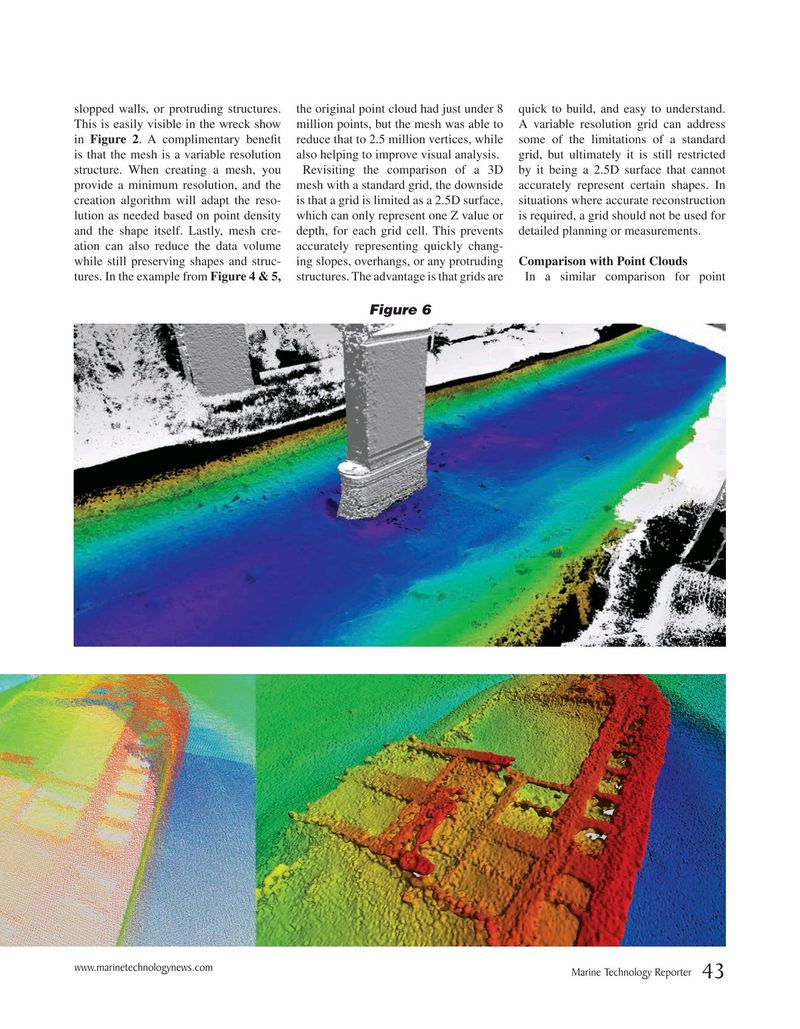
Page 43: of Marine Technology Magazine (June 2020)
Read this page in Pdf, Flash or Html5 edition of June 2020 Marine Technology Magazine
slopped walls, or protruding structures. the original point cloud had just under 8 quick to build, and easy to understand.
This is easily visible in the wreck show million points, but the mesh was able to A variable resolution grid can address in Figure 2. A complimentary beneft reduce that to 2.5 million vertices, while some of the limitations of a standard is that the mesh is a variable resolution also helping to improve visual analysis. grid, but ultimately it is still restricted structure. When creating a mesh, you Revisiting the comparison of a 3D by it being a 2.5D surface that cannot provide a minimum resolution, and the mesh with a standard grid, the downside accurately represent certain shapes. In creation algorithm will adapt the reso- is that a grid is limited as a 2.5D surface, situations where accurate reconstruction lution as needed based on point density which can only represent one Z value or is required, a grid should not be used for and the shape itself. Lastly, mesh cre- depth, for each grid cell. This prevents detailed planning or measurements. ation can also reduce the data volume accurately representing quickly chang- while still preserving shapes and struc- ing slopes, overhangs, or any protruding Comparison with Point Clouds tures. In the example from Figure 4 & 5, structures. The advantage is that grids are In a similar comparison for point
Figure 6 www.marinetechnologynews.com
Marine Technology Reporter 43

 42
42

 44
44
